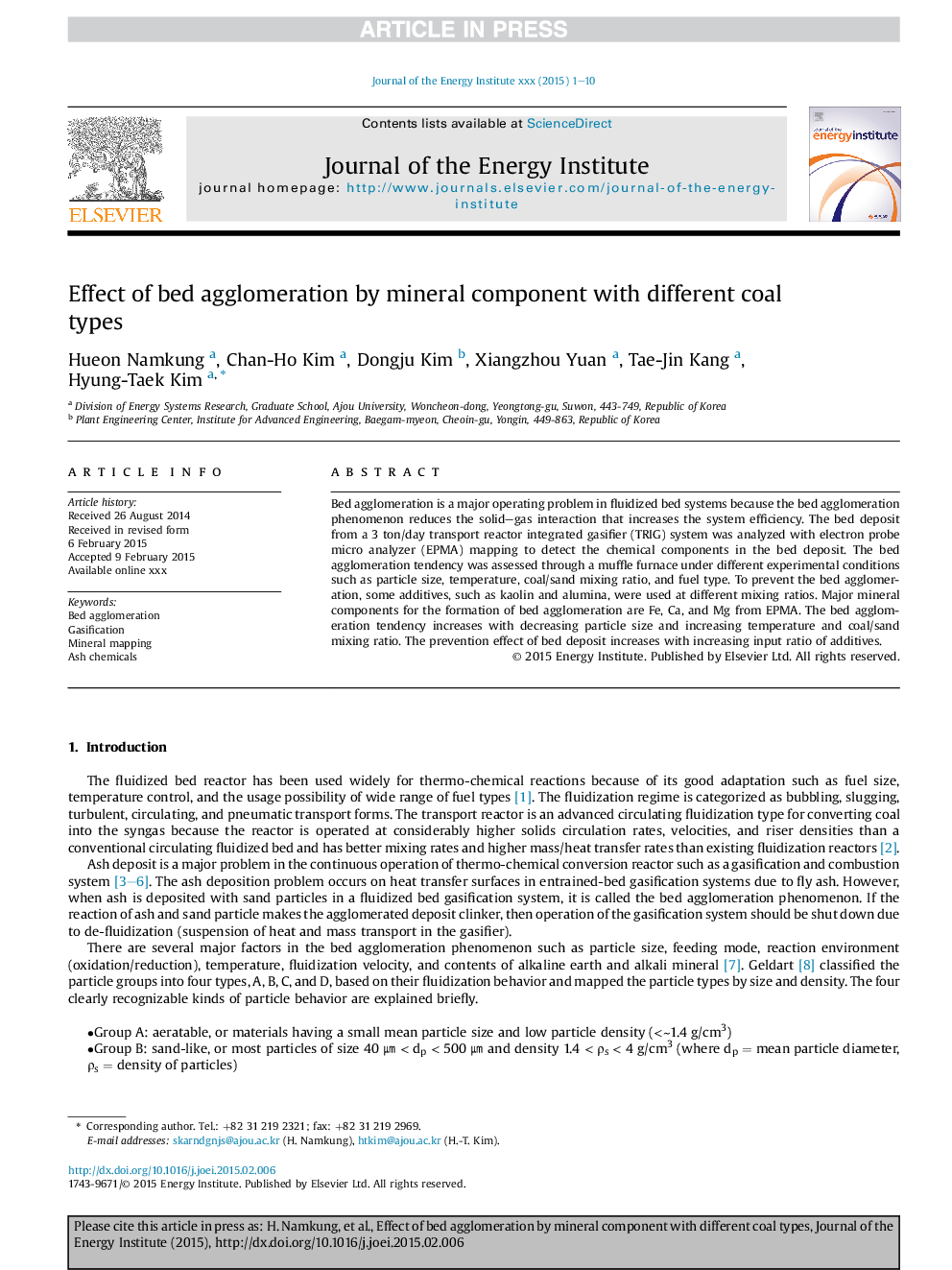| Article ID | Journal | Published Year | Pages | File Type |
|---|---|---|---|---|
| 1747642 | Journal of the Energy Institute | 2016 | 10 Pages |
Abstract
Bed agglomeration is a major operating problem in fluidized bed systems because the bed agglomeration phenomenon reduces the solid-gas interaction that increases the system efficiency. The bed deposit from a 3Â ton/day transport reactor integrated gasifier (TRIG) system was analyzed with electron probe micro analyzer (EPMA) mapping to detect the chemical components in the bed deposit. The bed agglomeration tendency was assessed through a muffle furnace under different experimental conditions such as particle size, temperature, coal/sand mixing ratio, and fuel type. To prevent the bed agglomeration, some additives, such as kaolin and alumina, were used at different mixing ratios. Major mineral components for the formation of bed agglomeration are Fe, Ca, and Mg from EPMA. The bed agglomeration tendency increases with decreasing particle size and increasing temperature and coal/sand mixing ratio. The prevention effect of bed deposit increases with increasing input ratio of additives.
Related Topics
Physical Sciences and Engineering
Energy
Energy Engineering and Power Technology
Authors
Hueon Namkung, Chan-Ho Kim, Dongju Kim, Xiangzhou Yuan, Tae-Jin Kang, Hyung-Taek Kim,
